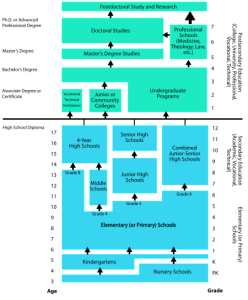K-12 Education I
OVERVIEW
The first thing students need to learn starting from kindergarten is how to learn. Most of what we learn though out our lifetimes is self-taught. The most often asked quest from kindergarten to k-3 is “why.” “Why” is the key to all learning. It is the desire of the human mind to learn. If this basic question can be nurtured throughout k-8 enough curiosity and imagination will be instilled in that student to last a lifetime. As the cognitive capabilities of the student develop through k-12 curriculum must be designed and taught to teach students how to think instead merely preparing for tests. The primary goals of k-12 education help students learn the skills they need to be lifelong learners.
“why.” “Why” is the key to all learning. It is the desire of the human mind to learn. If this basic question can be nurtured throughout k-8 enough curiosity and imagination will be instilled in that student to last a lifetime. As the cognitive capabilities of the student develop through k-12 curriculum must be designed and taught to teach students how to think instead merely preparing for tests. The primary goals of k-12 education help students learn the skills they need to be lifelong learners.
Even if they do not go on to pursue a four year university degree all K-12 student need to be educated. They need to know how to read and write a non-fiction story; they need to know math through geometry and algebra which have real life applications; they need to know science up through biology and chemistry; they need to know about American society and the societies around the world which influence our culture; they need to know about how we govern ourselves from the federal level down to the local non-profit; they need to know about human history and how we got here; they need to know about their physical being and how they blend with nature.; they need to know about art and music and how they improve our quality of life; they need to know about technology and how it’s used to  learn and work; and they need to how to think critically, communicate skillfully and the importance of collaboration.
learn and work; and they need to how to think critically, communicate skillfully and the importance of collaboration.
As seen in the Common Core State Standards (CCSS) U.S. K-12 education is fast evolving. Technology is revolutionizing education like never before. It is effecting cognitive development as students become smarter and more aware. This section follows the evolution of modern education from Dewey and the Progressive Era to Bloom’s Taxonomy which were the leading influences of k-12 curriculum development in their day. Today, Bloom’s Revised Taxonomy has influenced the development of the Blended-based Learning model (see: Blended-Based Learning) of which Project-based Learning, which emphasizes collaboration and cooperation, is a part. But first a look at CCSS.

Recent Comments